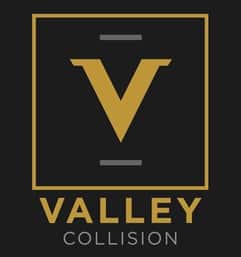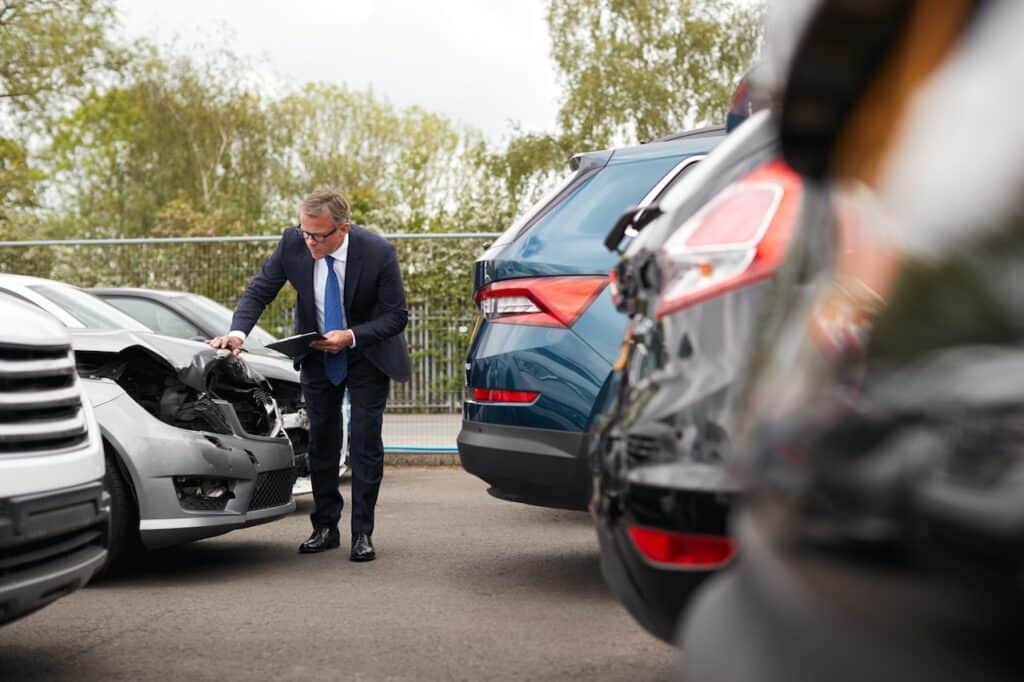It seems like the worst things in life happen at the most inconvenient times. Sometimes, it’s a red light when you’re running late. Other times, it’s getting hit by the person who decided to run that red light. And if that happens? It’s having to deal with the car insurance claim process.
Using car insurance after an accident can be overwhelming. From filing a claim to getting an auto body repair estimate, there’s a lot to manage. So here’s a quick guide to help you handle the car insurance claim process and get back on the road as soon as possible.
Immediately After an Accident
The accident just happened, now what?
1. Check for Injuries and Prioritize Safety
Make sure everyone is safe. Check everyone in your vehicle, and if it’s safe to do so, check the scene for anyone else who might be hurt. Call emergency services as soon as you can, and notify them if anyone is injured.
2. Document the Scene
If it’s safe to do so, collect as much evidence as you can, including:
- Photos of the damage to vehicles and any property
- The other driver’s license, insurance details, and contact information
- Contact information from any witnesses
- Time, date, location, road conditions, and any other relevant details
These details can help you file your claims and use your car insurance after an accident. When the police arrive, they will collect information to file an incident report. Stay calm and cooperative, and give the details you remember. You can request a copy of this report for your records and insurance claims.
Filing Your Insurance Claim
The next steps are where most people have questions. The car insurance claim process is not as scary as it seems when you break it down:
1. Notify Your Insurance Company
It’s important to contact your insurance company as soon as possible after the accident. In many cases, they will have a 24/7 incident line where you can call them right away.
2. File the Claim
Most insurance companies allow you to file a claim over the phone, on their website, or through their mobile app. It’s important to keep a record of details and documentation (like photos, police reports, and contact information) to give to your insurance company.
3. Claim Assignment
Once you’ve filed a claim, an insurance adjuster will contact you about your claim (usually within 1-3 days). The adjuster will investigate your claim, taking into consideration the information you give them, along with police reports or other documentation. At this point, they may also ask you to get an estimate from a repair company.
4. Get an Estimate and Approve Repairs
To better process your car insurance claim, your insurance company often requires you to get one or more estimates for repairs. Your insurance company may recommend a shop, but you are not required to have your vehicle serviced there. It’s important to ask what insurance will and won’t cover, though.
When you have a repair estimate approved, it’s time to get things fixed.
5. Receive Payment or Settlement
Depending on the extent of repairs and how your insurance company handles things, they might pay you money for repairs or send it directly to the repair shop. If there is any additional settlement, it happens in this stage.
6. Follow Up on Medical Claims (If Applicable)
Just as important as car insurance claims are medical claims. Accident injury coverage is necessary in most policies, so make sure you are getting all the benefits you deserve.
Types of Auto Insurance That Cover You
When you are reviewing your current policy or getting a new one, keep these types of insurance in mind. Different policies have different coverage options, so it’s important to know your coverage when you use car insurance after an accident.
1. Liability Insurance
Liability insurance covers property damage and injury for cases where you are at fault. Most states have a required amount of coverage. In Utah, you should have at least:
- $25,000 per person for bodily injury liability
- $65,000 for two or more persons for bodily injury liability
- $15,000 for property damage liability
2. Collision Coverage
Collision coverage is not required by law, but it can be very useful. This type of coverage pays whether you are at fault or not. It’s most commonly used if you are hit while your vehicle is parked, if you hit a stationary object (e.g. a guardrail or post), or for collision repairs in an accident.
3. Comprehensive Coverage
Comprehensive coverage is for things not collision related, and are often outside of your control. This usually includes things like hitting an animal, a tree falling on your vehicle, glass damage, floods, hail, or fires.
4. Personal Injury Protection (PIP)
Personal injury protection policies are also known as “no-fault insurance” and cover healthcare or medical issues related to an accident. This is beneficial because it covers policyholders and passengers, whether or not those individuals have health insurance.
5. Uninsured/Underinsured Motorist Coverage
According to a 2023 study, 14% (or one in seven) of drivers in the United States were uninsured in 2022. Uninsured or underinsured motorist coverage can cover the additional costs of a driver without liability insurance. This also comes in handy when you’re the victim of a hit and run.
Get the Process Rolling with Valley Collision
Being in an accident is hard enough, so making the car insurance claim process easier is important. At Valley Collision, we’re here to help with reliable estimates and expert repair services you can trust.
Involved in an accident? Get your free online estimate today!

